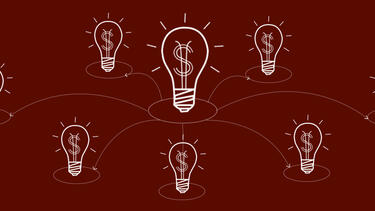Behavioral
The Price of Trust: How Conflicts of Interest Threaten the Marketplace of Ideas
A new study co-authored by Yale SOM’s John Barrios investigates how conflicts of interest erode trust in the very institutions meant to produce independent knowledge.

Balancing the Letter and the Spirit
Should organizations favor the dependable efficiency of rules and standards or a less calculated but more flexible operation that bends to accommodate individual situations? How about both?
Anxiety and Interest Rates
In a New York Times op-ed, Professor Robert J. Shiller explores the link between people’s feelings of uncertainty about the future and the unusual dynamics at work in today's economic world.
Can Online Reviews Be Trusted?
The online, user-generated review is a boon for consumers—a chance to sidestep promotional claims and get an honest assessment. But as soon as reviews appeared online, fake reviews followed. A study co-authored by Professor Judith Chevalier looks at the prevalence of fake hotel reviews and tests a hypothesis about who might post them and why.
Coworkers Affect Retirement Savings Rates
Investment companies including Fidelity, Putnam Investments, and Voya Financial are rolling out tools that tell investors how their retirement savings compare to those of their peers. This social comparison is intended to motivate investors to increase their savings; however, new research shows that it can have the opposite effect.
Why Do Our Peers’ Financial Decisions Affect Our Own?
The choices we make—the cars we drive, the neighborhoods we live in, the gyms we join—are influenced by our social networks, the people we surround ourselves with. Our financial choices are no exception. While thousands of studies have examined peer effects, a new study co-authored by Florian Ederer, assistant professor of economics, is the first to clearly identify the two channels of social influence—social learning and social utility—that explain why our peers’ financial decisions affect our own.

Did Culture Cause the Financial Crisis?
Nobel Laureate Robert J. Shiller says that an event on the magnitude of the 2008-2009 financial crisis has to have many causes, but he sees “the spirit of the times” as a driving force behind many of them. In a lecture at Yale SOM, he described how he sees this spirit acting in everything from Fed policy to the growth in casinos.
When a Stock Market Theory Is Contagious
In a New York Times op-ed, Professor Robert J. Shiller explains that stock market movements are driven by popular narratives that spread like “thought viruses.” Secular stagnation—the idea that the global economy may languish for years to come—is the current story driving down the stock market. Whether true or false, the idea alone has the potential to erase five years of gains and create a bear market.
What Does an Economist Make of the Ice Bucket Challenge?
Somehow ice and cold water have become the social media phenomenon of the summer. Millions of people have shivered and screamed while dumping buckets of ice over their own heads, and a medical charity has tens of millions of dollars raised as a result. Yale Insights spoke with Yale economist Florian Ederer to try to make sense of all of this.

When Is One Motivation Better than Two?
Laboratory experiments have suggested that, counterintuitively, having both an internal motivation for completing a task and an external reward makes performance weaker. A study by Yale SOM’s Amy Wrzesniewski tested this idea in the real world, by examining how the motivations of West Point cadets affected their performance. The results have strong implications for how leaders can get the best performance from their organizations.
The Secret of Effective Motivation
What kinds of motives are most conducive to success? In a New York Times op-ed, Professor Amy Wrzesniewski and coauthor Barry Schwartz discuss their research looking at the motives of new West Point cadets and how they relate to success as Army officers.